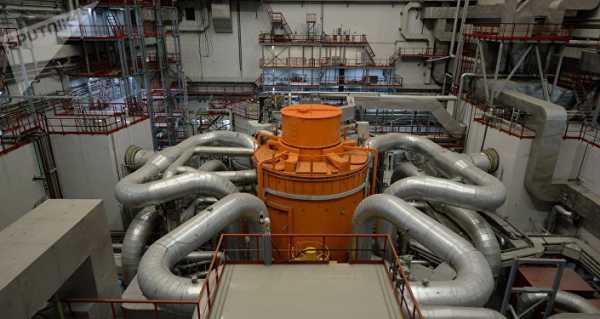
Scientists from the National Research Nuclear University MEPhI conducted a series of experiments that will help improve the accuracy of the remote control of nuclear reactors by almost a thousand times.
The principle of the device operation, which can take world nuclear security to a new level, is based on the recently discovered phenomenon of coherent elastic neutrino-nucleus scattering.
The results of the study, supported by the Rosatom State Atomiс Energy Corporation, were reported by the press service of the university.
One of the methods for the supervision of nuclear reactors is neutrino radiation analysis. It helps prevent the unauthorised removal of nuclear fuel that could be used to produce illegal nuclear weapons. The analysis is performed remotely to avoid interfering with the operation of nuclear power plants under suspicion.
Researchers at the National Research Nuclear University MEPhI explained that the operation of nuclear reactors produces isotope 239Pu, the so-called weapons-grade plutonium, as one of the products of nuclear fuel decay. The neutrino radiation detectors allow detecting the withdrawal of this material or fixing the change in the isotopic composition of the reaction.
By improving the neutrino control method, scientists from NRNU MEPhI are working on a fundamentally new type of two-phase emission detectors based on the effect of coherent elastic neutrino-nucleus scattering (CEvNS) on heavy atomic nuclei. Predicted by Soviet scientists more than 40 years ago, this phenomenon was discovered in an acceleration experiment only in 2017.
According to the NRNU MEPhI researchers, using the CEvNS effect allows creating a detector which will be almost 1000 times more sensitive to reactor neutrinos than the existing devices. Modern neutrino detectors are multi-ton structures comparable in size to a nuclear reactor, while the new detector can be implemented as a mobile unit of small size.
At present, scientists have completed the analysis of data obtained during the second in the history of observation of coherent elastic neutrino-nucleus scattering. According to them, the results made it possible to significantly clarify the theoretical model of the phenomenon. This time, relatively light argon nuclei were used as a neutrino target.
According to the MEPhI scientists, the detector they are designing has already attracted the attention of the International Atomic Energy Agency (IAEA) board, as its application will make nuclear power safer and more transparent.
Furthermore, the scientists stressed that the sensitivity of the new detector is also quite suitable for purely scientific purposes, for example: to analyse the neutrino radiation of the Sun or supernova stars, which will allow them to better understand the processes occurring inside them.
The scientific team plans to conduct the first tests of the promising detector at the Kalinin NPP as early as next year.
The RED-100 collaboration work on CEvNS process research was supported by the Russian Science Foundation Grant №18-12-00135.
The work on testing RED-100 to develop a technology for effective remote control of the NPP nuclear reactor core was supported by JSC Science and Innovations of the Rosatom State Atomiс Energy Corporation.
Sourse: sputniknews.com






